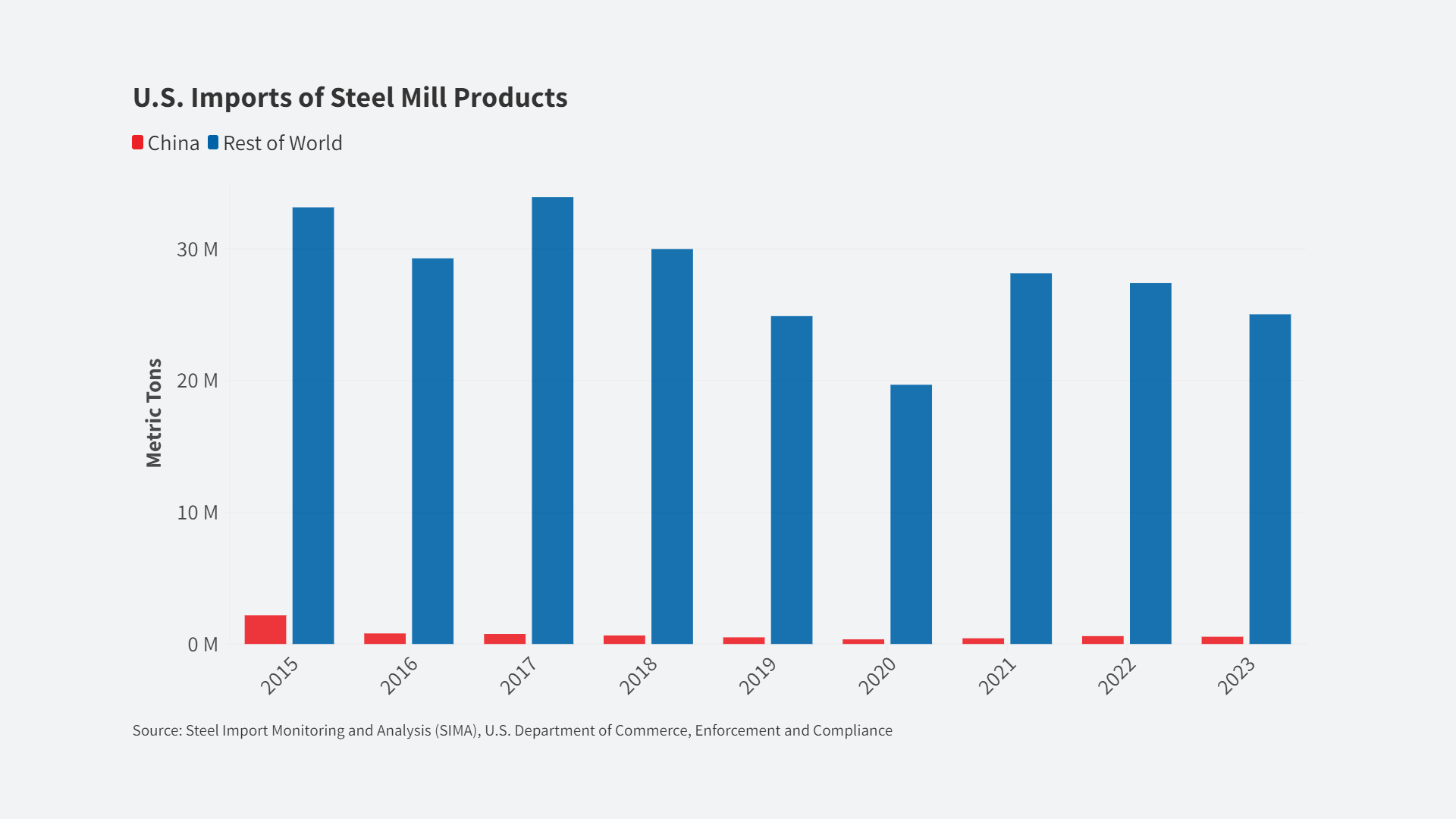By Jeff Ferry, CPA Research Director
The US trade deficit grew 6.8% in November to $45.2 billion, its worst monthly figure in nine months. The November report hammered home the challenge of a large and growing manufacturing deficit and large bilateral deficits with many trading partners.
The deficit growth was driven by a small decline of 0.2% in exports to $185.8 billion and a 1.1% increase in imports to $231.1 billion. As Bloomberg News pointed out on Friday, exports of capital equipment were the weakest since September 2011 and reflected a sharp drop in exports of commercial aircraft.
On a year-to-date basis, the trade deficit totaled $454.0 billion for the first 11 months of 2016, 1.1% better than the $458.9 billion reported for the first 11 months of 2015. If that trend holds, the full-year 2016 trade deficit could come in a tiny bit below 2015’s deficit of $500 billion.
However, the data contained in the 52-page memo released on Friday by the Census Bureau still show many items to be concerned about. For example, our deficit on manufactured goods worsened in November to $80.7 billion, compared to October’s $77.0 billion. The worsening was due mostly to poorer export performance. Exports fell 5.4% to $86.0 billion, while imports fell just 0.7% to $166.7 billion. On a year-to-date basis, the numbers also look bad, with January-November 2016 manufacturing deficit of $792.3 billion, up 3.5% from the corresponding period in the previous year. Our manufacturing deficit is likely to top $800 billion this year.
Looking at our largest trade deficit partners, the situation improved by very small amounts with many of them. Table 1 shows the latest figures. Our bilateral deficit with China improved by a probably insignificant 1.7% (negative percentages in Table 1 indicate better performance, i.e. a reduction in the deficit) to $28.4 billion. On a year-to-date basis, our deficit with China is 6.3% better than in 2015, totaling $316.7 billion in the first eleven months of 2016. China accounted for more than half of our total 2015 trade deficit of $500 billion. On a year-to-date basis, only Mexico showed a significant worsening of the bilateral deficit, up 4.5% to $58.4 billion. Mexico has been the target of much of President-Elect Trump’s Twitter warnings in recent weeks, with companies ranging from Ford Motor Company to Corona Beer reacting publicly to the threat of tariffs on Mexican imports.
|
Table 1 Largest Bilateral Deficit Partners (Figures in millions of dollars) |
||||||
|
Partner |
November 2016 |
October 2016 |
Monthly Change (%) |
Year-to-Date 2016 |
Year-to-Date 2015 |
YTD Change (%) |
|
China |
-28,377 |
-28,869 |
-1.7% |
-316,655 |
-338,033 |
-6.3% |
|
Japan |
-5,746 |
-5,778 |
-0.6% |
-62,180 |
-62,539 |
-0.6% |
|
Mexico |
-5,714 |
-5,788 |
-1.3% |
-58,409 |
-55,874 |
4.5% |
|
Germany |
-5,321 |
-4,696 |
13.3% |
-59,705 |
-68,490 |
-12.8% |
|
Canada |
-3,237 |
-1,702 |
90.2% |
-9,837 |
-14,358 |
-31.5% |
Technology Deficit Rises
Another source of concern is that the U.S. deficit on advanced technology products has worsened dramatically, reaching $13.5 billion, its highest monthly level in at least three years. That figure is 55.6% worse than the October level, and 18.6% worse than the November 2015 level. However, on a year-to-date basis, the advanced technology deficit improved from $84.2 billion in January to November 2015 to $79.3 billion in the first eleven months of 2016. The advanced technology deficit is dominated by the “information and communications” sector, which showed a deficit of $16.0 billion in November.
The automotive sector is another important sector, because it accounts for a large number of U.S. jobs and because it has also been in the President-Elect’s sights. The Census data shows that the trade deficit in automotive vehicles, parts, and engines worsened in November to $17.2 billion, compared to $16.7 billion in October. Mexico was responsible for about a third of that deficit, or $6.5 billion in the month. Unraveling the U.S.-Mexico supply chain is one of the challenges the Trump Administration faces in its efforts to get more U.S.-bound Mexican production moved back onto U.S. soil. On a year-to-date basis, the automotive deficit reached $182.0 billion in the first eleven months of 2016, 1.4% worse than a deficit of $179.4 billion in the corresponding period of 2015.
Jobs Data For December
Also on Friday, the Department of Labor issued its monthly jobs report for December. It was a mixed picture, suggestive of a lackluster economic recovery growing even more sluggish after seven years. The unemployment rate edged up slightly to 4.7% as the economy added 156,000 jobs in the month, less than the 2016 average of 180,000 jobs added per month. The average hourly wage was up 2.9% year-on-year which is encouraging, although there have been some questions over some of the government’s survey data on incomes due to revisions in methodology. The industrial mix of job gains was not encouraging. While manufacturing gained 17,000 jobs in December, total manufacturing jobs have fallen 45,000 in 2016. The two biggest gainers in jobs were health care and restaurants. While more jobs are always better than less, those two sectors generally pay lower wages and salaries than the economy’s average. On the other hand, as CEPR’s Dean Baker pointed out, jobs in professional and technical services rose just 6,600 in December, compared to their average monthly growth in 2016 of 23,400. Those tend to be high-paying jobs so weakness in that sector is a concern.
Just two weeks from Inauguration Day, these two batches of economic data suggest that the new President and the new Congress will have big challenges in addressing the core economic issue of weak growth and falling living standards for too many Americans.













